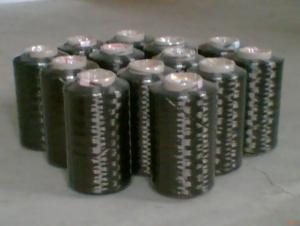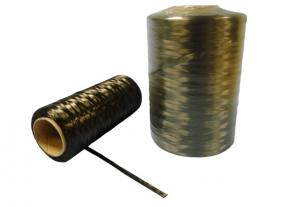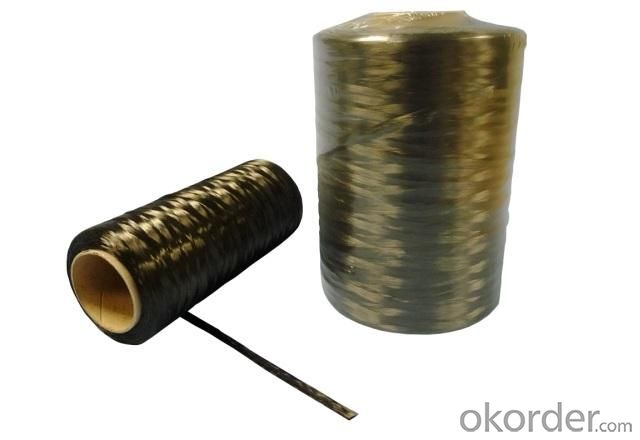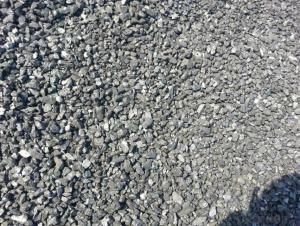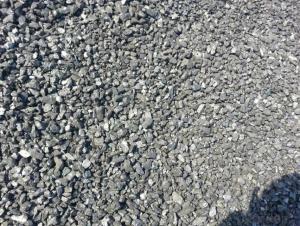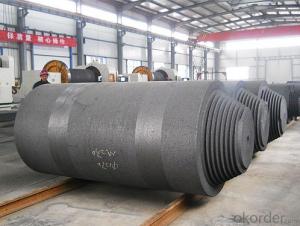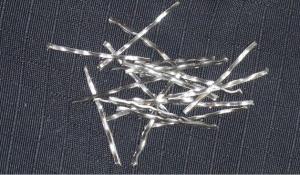Carbon Fiber 12K
- Loading Port:
- China Main Port
- Payment Terms:
- TT or LC
- Min Order Qty:
- 2Ton m.t.
- Supply Capability:
- 1000Ton m.t./month
OKorder Service Pledge
OKorder Financial Service
You Might Also Like
Specifications of Carbon Fiber 12K
1. Material: carbonized polyacrylonitrile fiber
2. Filament number:12k
3. Fiber type: T700
4. Tensile strength: 360kgf/mm2
General Data of Carbon Fiber 12K
|
Tow Size |
Tow Count/CM |
Weave Style |
WidthRange (mm) |
Std. Width (mm) |
Thickness (mm) |
FAW (g/sq.m) |
FAW (oz/sq.yd) |
|
3K |
4 x 4 |
Plain |
10~1500 |
1000 |
0.16 |
160 |
4.72 |
|
3K |
4 x 4 |
2x2 Twill |
10~1500 |
1000 |
0.16 |
160 |
4.72 |
|
3K |
5 x 4 |
Plain |
10~1500 |
1000 |
0.18 |
180 |
5.31 |
|
3K |
5 x 4 |
2x2 Twill |
10~1500 |
1000 |
0.18 |
180 |
5.31 |
|
3K |
5 x 5 |
Plain |
10~1500 |
1000 |
0.2 |
200 |
5.90 |
|
3K |
5 x 5 |
2x2 Twill |
10~1500 |
1000 |
0.2 |
200 |
5.90 |
|
3K |
5 x 6 |
Plain |
10~1500 |
1000 |
0.22 |
220 |
6.49 |
|
3K |
5 x 6 |
2x2 Twill |
10~1500 |
1000 |
0.22 |
220 |
6.49 |
|
3K |
6 x 6 |
Plain |
10~1500 |
1000 |
0.24 |
240 |
7.08 |
|
3K |
6 x 6 |
2x2 Twill |
10~1500 |
1000 |
0.24 |
240 |
7.08 |
|
3K |
8 x 8 |
Plain |
10~1500 |
1000 |
0.32 |
320 |
9.44 |
|
3K |
8 x 8 |
2x2 Twill |
10~1500 |
1000 |
0.32 |
320 |
9.44 |
|
3K |
8 x 8 |
8H Satin |
10~1500 |
1000 |
0.32 |
320 |
9.44 |
Storage of Carbon Fiber 12K
It is recommended that the carbon fiber fabric are stored in a cool and dry environment. Recommended temperature range of storage is between 10 ~ 30 degree and relative humidity between 50 ~ 75%.The carbon fiber fabric should remain in the packaging until just prior to use.
Packaging & Delivery of Carbon Fiber 12K
Product is manufactured in form of a roll wound on a paper tube and then packed in a plastic film and placed within a cardboard carton. Rolls can be loaded into a container directly or on pallets.
Packaging Detail: carton
Delivery Detail: within 20 days

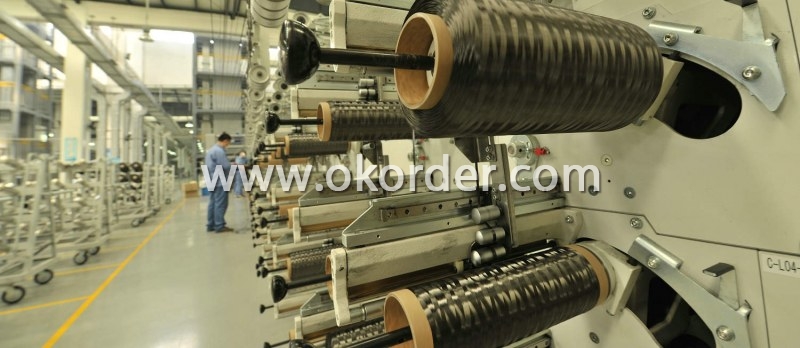
- Q: How is carbon formed?
- Carbon is formed through various natural processes, primarily through the cycle of life and death of living organisms. The formation of carbon starts with the process of photosynthesis in plants, where they use sunlight, water, and carbon dioxide from the atmosphere to produce glucose. This glucose is then converted into other organic molecules, such as carbohydrates, fats, and proteins, which form the fundamental building blocks of all living organisms. When plants and animals die, their remains and waste products are broken down by decomposers like fungi and bacteria. During this decomposition process, carbon is released back into the environment in the form of carbon dioxide or methane gas. Additionally, some of the organic matter may become buried under layers of sediment, where it undergoes a process called fossilization over millions of years. This fossilization process, combined with heat and pressure, transforms the organic matter into fossil fuels such as coal, oil, and natural gas, which are rich sources of carbon. Apart from the biological processes, carbon can also form through geological processes. Volcanic eruptions release carbon dioxide into the atmosphere, and over long periods of time, this carbon dioxide can dissolve in water and combine with minerals to form rocks like limestone. These rocks act as a carbon sink, storing large amounts of carbon over geologic timescales. Overall, carbon is formed and cycled through a complex interplay of biological and geological processes, playing a crucial role in maintaining the balance of carbon in the Earth's atmosphere and supporting life as we know it.
- Q: What are the impacts of carbon emissions on the stability of wetlands?
- Carbon emissions have significant impacts on the stability of wetlands. Increased levels of carbon dioxide in the atmosphere contribute to climate change, resulting in rising temperatures and changes in precipitation patterns. These changes can lead to the degradation and loss of wetlands, as they are sensitive ecosystems that rely on specific hydrological conditions. Additionally, carbon emissions contribute to ocean acidification, which can affect the health of coastal wetlands that depend on a delicate balance of saltwater and freshwater. Overall, carbon emissions pose a threat to the stability and long-term survival of wetlands, with far-reaching ecological and socioeconomic consequences.
- Q: What is carbon neutral?
- Carbon neutral refers to achieving a state where the net carbon emissions released into the atmosphere are balanced out by an equivalent amount of carbon removal or offsetting. This is typically achieved by reducing greenhouse gas emissions and investing in projects that remove carbon dioxide from the atmosphere, resulting in no net increase of carbon dioxide levels.
- Q: What are the consequences of increased carbon emissions on urban areas?
- Urban areas are significantly affected by the increase in carbon emissions, which have notable impacts on various aspects. One of the most significant consequences is the worsening of air pollution. The release of harmful pollutants like nitrogen oxides and particulate matter is contributed by carbon emissions, especially from vehicles and industrial activities. These pollutants can cause respiratory problems, worsen existing health conditions, and increase the risk of lung cancer and cardiovascular diseases among urban residents. Moreover, the increase in carbon emissions leads to the occurrence of urban heat islands. This happens because carbon dioxide and other greenhouse gases trap heat in the atmosphere, resulting in higher temperatures in urban areas. This effect is particularly pronounced due to the abundance of concrete and asphalt surfaces that absorb and radiate heat. Consequently, urban areas experience higher temperatures compared to nearby rural areas, further intensifying the discomfort and health risks associated with heat stress, particularly for vulnerable populations like the elderly and those with limited access to cooling resources. The consequences of increased carbon emissions also extend to the natural environment. Urban green spaces and ecosystems are negatively affected as higher levels of carbon dioxide disrupt plant growth and reduce biodiversity. This exacerbates the loss of natural habitats and the degradation of urban ecosystems, leading to a decline in the provision of ecosystem services such as air purification, temperature regulation, and stormwater management. Additionally, increased carbon emissions have economic implications for urban areas. As carbon emissions rise, the cost of addressing climate change-related challenges like flooding and extreme weather events increases. This puts a strain on the budgets of local governments and may result in higher taxes or reduced funding for other essential services. To tackle these consequences, it is crucial for urban areas to implement strategies that reduce carbon emissions and promote sustainability. This includes investing in public transportation, encouraging the use of renewable energy sources, promoting energy-efficient buildings, and implementing policies to reduce vehicle emissions. By adopting these measures, urban areas can mitigate the negative effects of increased carbon emissions and create healthier, more sustainable environments for their residents.
- Q: How does carbon affect water quality?
- Carbon can affect water quality by altering its pH level and reducing its oxygen content. Additionally, carbon can react with other chemicals present in water to form harmful compounds, compromising its overall quality and making it unsuitable for consumption and aquatic life.
- Q: How does carbon impact the growth and development of plants?
- Carbon is an essential element for the growth and development of plants. It plays a crucial role in the process of photosynthesis, which is how plants convert sunlight into energy. During photosynthesis, plants absorb carbon dioxide from the atmosphere and use it, along with water, to produce glucose and oxygen. Glucose is the primary source of energy for plant growth and is utilized to build various molecules such as cellulose, proteins, and lipids. In addition to being a key component of sugars, carbon is also a vital element in the structure of plant cells. It forms the backbone of complex organic compounds, including carbohydrates, proteins, nucleic acids, and lipids. These compounds are essential for the growth and development of plants, as they are involved in processes like cell division, cell elongation, and the formation of new tissues. Furthermore, carbon is involved in regulating various physiological and metabolic processes in plants. It influences the opening and closing of stomata, the tiny pores on the surface of leaves, which control the uptake of carbon dioxide and the release of oxygen and water vapor. Carbon also affects the production of plant hormones, which are responsible for regulating growth, development, and responses to environmental stimuli. However, excessive carbon dioxide in the atmosphere, resulting from human activities such as burning fossil fuels, can have negative impacts on plants. Elevated levels of carbon dioxide can lead to changes in plant physiology, including increased photosynthesis rates and decreased stomatal conductance. These changes can affect the nutritional quality of plants, alter their interactions with pests and diseases, and disrupt ecosystems. In summary, carbon is essential for the growth and development of plants as it is a key component of sugars, organic compounds, and structural elements in plant cells. It is involved in processes such as photosynthesis, cell division, and the regulation of physiological and metabolic functions. However, changes in atmospheric carbon dioxide levels can have both positive and negative impacts on plants, emphasizing the need for sustainable practices to ensure the future growth and development of plant species.
- Q: How is carbon used in the medical field?
- Carbon is used in the medical field in various ways. It is commonly used in medical imaging techniques such as positron emission tomography (PET) scans, where radioactive carbon isotopes are used to track the movement and metabolism of substances within the body. Carbon is also utilized in the production of medical implants and devices, including artificial heart valves, pacemakers, and prosthetics. Additionally, carbon-based materials are being researched for drug delivery systems, tissue engineering, and as components of medical sensors and electrodes.
- Q: What are the impacts of carbon emissions on the stability of permafrost?
- Carbon emissions have a significant impact on the stability of permafrost, which is the layer of soil, sediment, and rock that remains frozen for at least two consecutive years. This frozen layer covers vast areas in the Arctic, subarctic regions, and high-altitude mountain ranges. One of the main consequences of carbon emissions on permafrost stability is the acceleration of climate change. The emission of carbon dioxide (CO2) and other greenhouse gases traps heat in the atmosphere, resulting in global warming. As temperatures increase, permafrost begins to thaw, leading to various negative outcomes. Thawing permafrost releases a substantial amount of stored carbon into the atmosphere. This carbon was previously locked in frozen organic matter, such as dead plants and animals, which accumulated over thousands of years. When permafrost thaws, microbes decompose this organic matter and release greenhouse gases like carbon dioxide and methane. These emissions create a positive feedback loop, exacerbating climate change and causing further permafrost thawing. The release of carbon from thawing permafrost contributes to the overall rise in atmospheric greenhouse gas concentrations. This, in turn, amplifies global warming and global climate change. The consequences are not confined to the Arctic; they impact the entire planet. Rising temperatures, sea-level rise, extreme weather events, and disruptions to ecosystems are among the results of global climate change. Permafrost thaw also affects infrastructure and human settlements in the Arctic and subarctic regions. Buildings, roads, pipelines, and other infrastructure constructed on permafrost can become unstable as the ground beneath them softens. This instability can lead to structural damage and economic losses. Furthermore, communities that rely on permafrost for traditional activities like hunting, fishing, and transportation face challenges due to the changing landscape. The impacts of carbon emissions on permafrost stability extend beyond local areas and have global implications. The release of stored carbon from permafrost contributes to climate change, which has far-reaching consequences for ecosystems, economies, and societies worldwide. It is crucial to decrease carbon emissions and mitigate climate change to preserve permafrost and its essential role in the Earth's climate system.
- Q: How does deforestation affect carbon levels?
- Deforestation significantly increases carbon levels in the atmosphere. Trees absorb carbon dioxide during photosynthesis, acting as a natural sink for this greenhouse gas. When forests are cut down or burned, they release the stored carbon back into the atmosphere as carbon dioxide. This process contributes to the greenhouse effect, leading to climate change and global warming.
- Q: How does carbon impact the energy balance of the Earth?
- Carbon impacts the energy balance of the Earth by trapping heat in the atmosphere through the greenhouse effect. This leads to an increase in global temperatures, known as global warming, and disrupts the natural equilibrium of energy flow on the planet.
1. Manufacturer Overview
| Location | Jiangsu,China |
| Year Established | 2002 |
| Annual Output Value | |
| Main Markets | Europe, America, Africa, Oceania and Japan, Korea, southeast Asia |
| Company Certifications | ISO9000 |
2. Manufacturer Certificates
| a) Certification Name | |
| Range | |
| Reference | |
| Validity Period |
3. Manufacturer Capability
| a) Trade Capacity | |
| Nearest Port | |
| Export Percentage | |
| No.of Employees in Trade Department | |
| Language Spoken: | |
| b) Factory Information | |
| Factory Size: | |
| No. of Production Lines | |
| Contract Manufacturing | |
| Product Price Range | |
Send your message to us
Carbon Fiber 12K
- Loading Port:
- China Main Port
- Payment Terms:
- TT or LC
- Min Order Qty:
- 2Ton m.t.
- Supply Capability:
- 1000Ton m.t./month
OKorder Service Pledge
OKorder Financial Service
Similar products
Hot products
Hot Searches
Related keywords

